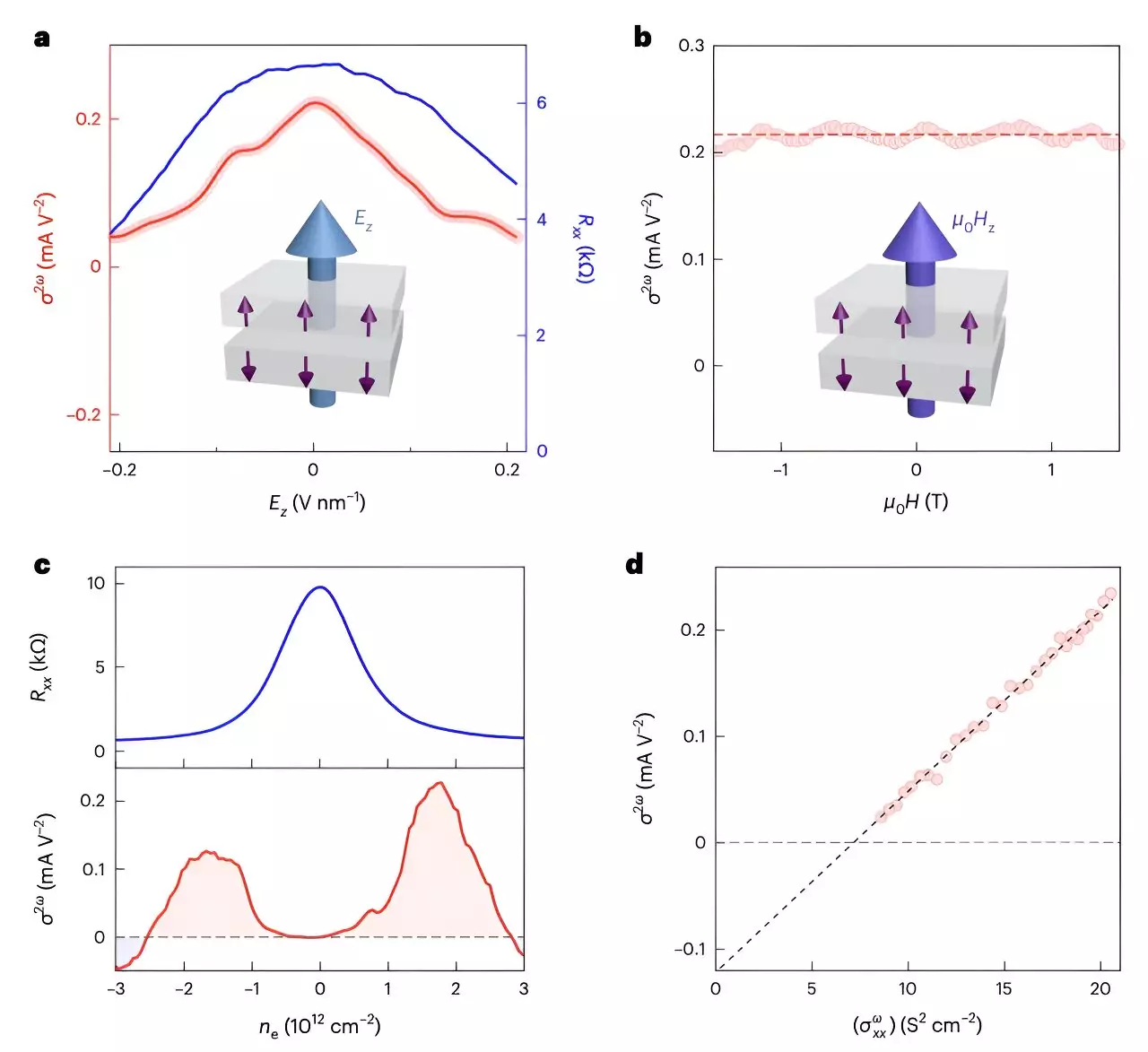Antiferromagnets represent a fascinating class of materials where the alignment of magnetic moments occurs in an alternating fashion between neighboring atoms. This unique arrangement leads to zero net magnetization at macroscopic scales, distinguishing them from their ferromagnetic counterparts. The interplay of magnetic properties within antiferromagnetic materials opens new avenues for cutting-edge technological advancements, particularly in the realms of spintronics and electronic devices.
A recent groundbreaking study conducted by researchers at Harvard University has unveiled an intriguing phenomenon known as the antiferromagnetic diode effect in MnBi2Te4. This specific antiferromagnetic material is noted for its centrosymmetric crystal structure, which intriguingly does not exhibit directional charge separation. Published in the journal Nature Electronics, the team’s findings suggest that this diode effect—characterized by the unidirectional flow of electrical current—could be instrumental in creating novel technologies, including in-plane field effect transistors and advanced microwave energy harvesting systems.
The Significance of the Diode Effect
The diode effect has established its importance across a variety of applications, functioning as a critical component in devices such as radio receivers, temperature sensors, and digital circuits. Traditionally associated with materials that allow current to flow predominantly in one direction, the diode effect has also been observed in superconducting materials lacking a center of symmetry, termed non-centrosymmetric polar conductors. The Harvard team’s hypothesis sought to extend this understanding to the antiferromagnetic topological insulator MnBi2Te4, leading to the anticipation of a similar effect within this centrosymmetric structure.
Research Methodology and Findings
The team fabricated an array of devices utilizing even-layered MnBi2Te4 distinguished by two distinctive electrode configurations. These configurations included Hall bar electrodes, which measure the Hall effect through longitudinal current flow and transverse voltage measurement, as well as radially distributed electrodes arranged in a circular layout. Remarkably, the research team confirmed the presence of the antiferromagnetic diode effect, characterized by nonlinear transport properties in both electrode configurations.
To delve deeper into the exploration of MnBi2Te4 and substantiate their findings, multiple analytical techniques were deployed. Spatially resolved optical methods and electrical sum-frequency generation (SFG) measurements played a pivotal role in identifying the unique properties of the material. The researchers reported a significant second-harmonic response in devices enabled by the antiferromagnetic characteristics of the even-layered MnBi2Te4, indicating the versatility of this effect in practical applications.
One of the most prominent assertions from the research is the potential application of the antiferromagnetic diode effect in the development of innovative technologies. The ability to create in-plane field-effect transistors and efficient microwave energy harvesting devices adds a new dimension to the evolving field of electronic materials. Additionally, the discovery that electrical sum-frequency generation can be utilized as a tool to detect nonlinear responses in quantum materials highlights the broad implications of this research beyond mere academic interest.
As the findings from the Harvard team signify a pioneering step towards realizing the potential of antiferromagnetic diode effects in modern technology, this research could catalyze further investigations into the role of antiferromagnetism in advanced device architecture. The prospect of developing antiferromagnetic logic circuits and spintronic devices not only underlines the relevance of these materials but also enhances the scope for innovative solutions in various sectors, including information technology and energy systems.
The observation of the antiferromagnetic diode effect in even-layered MnBi2Te4 opens an exciting chapter in the study of quantum materials, unveiling pathways for new device technologies in the process. As researchers continue to probe the intricate properties of antiferromagnets, the potential applications in spintronics and other electronic fields are boundless, promising advancements that could reshape our technological landscape. The ongoing exploration of this unique material will likely yield fascinating insights, contributing significantly to the next generation of high-performance devices.


Leave a Reply